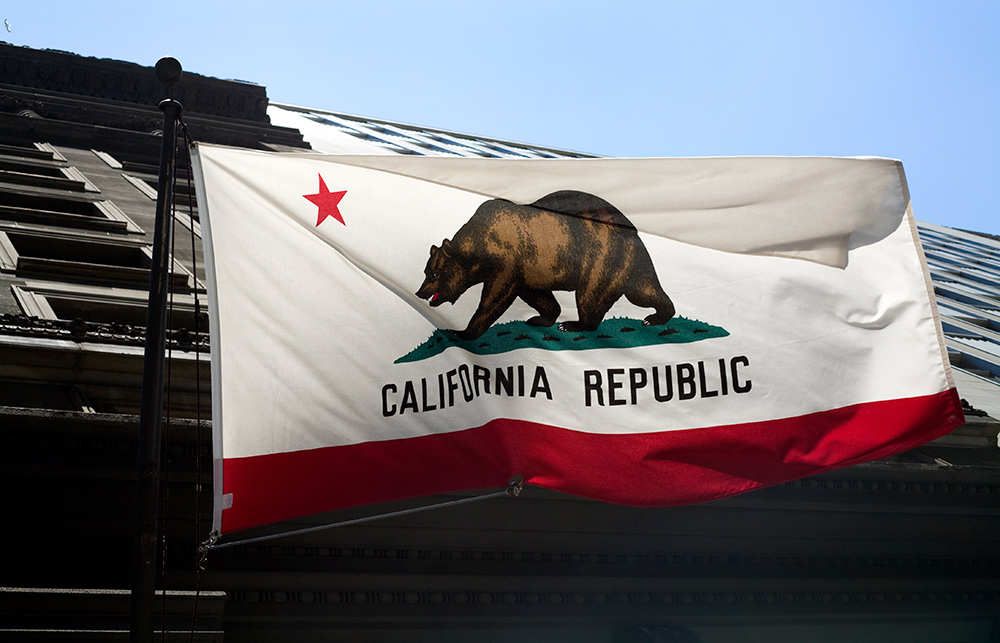善待员工有奖励,加州将制定“道义评估系统”

今年3月初,美国加利福尼亚州的州长加文·纽瑟姆亲自领衔的未来工作委员会(Future of Work Commission)公布了一系列极具开创性的大目标,以期在未来十年达成一项为所有人创造机会的新社会契约。
在联邦和各州领导人集中精力重建惨遭全球新冠疫情和随之而来的衰退蹂躏的美国经济之际,该委员会的建议可谓恰逢其时。
然而,这些登月目标要想成功,必须得火箭推动才行。为此,我们认为,州政府可以积极鼓励加州所有公司在为客户和股东提供价值的同时,善待员工。
在过去一年,与来自学术界、政府、劳工和商界的专家磋商之后,我们制定了一项框架,试图让“有道义的雇主”在获得州政府合同方面享有一定的优待,或许还会向这些获得认证的企业提供其他好处。此举旨在助力那些公平对待员工的公司,特别是身处抗疫一线的公司,同时激励落后企业做得更好。我们的计划与未来工作委员会的目标一致,即提高加州“高质量工作的标准和份额”。
哪些雇主应该得到这些好处呢?
我们精心设计了一个认证系统,它将使用一套通用的衡量标准来评估特定公司相对于业界同行的表现。这套拟定实施的系统将以事实为基础,以数据为驱动,全力确保州政府向企业授予各类好处时秉持客观、一致和透明的原则。
根据这套系统,所有雇佣1000名或以上加州员工的公司(这些企业约占加州私营部门劳动力总数的三分之一)每年必须报告18项与员工福祉密切相关的指标,其涉及范围包括薪酬、工时和排班、健康、退休、带薪休假福利、内部晋升、人员流动、工人安全、合同工的使用,以及性别和种族平等等方面。这些信息随后将公布于众。
除了推动企业规范向积极的方向发展外,实施这套有待立法机关通过的系统还有一些令人信服的公共政策原因。
首先,工人显然有兴趣看到这些数据。消费者、投资者、地方官员和企业所在社区的成员也是如此,因为他们需要据此决定去哪里购物,在哪里部署资本。
事实上,所有这些与员工相关的信息都将以一种易于理解的形式显示出来,就像营养标签一样。每家公司的得分都将与行业平均水平以及表现最好的公司进行比照。
其次,政策制定者必然会从这些数据中浮现的模式中获得新的见解,从而推动加州法律法规做出有助于改善工人境遇的其他改变。
第三,披露这些数据有助于州政府更加明智地使用纳税人资金。加州准备在未来几年向清洁能源、交通运输和其他大型项目投入数十亿美元。其中大部分资金将流向大公司。州政府机构难道不应该跟那些不仅有资格承揽这些项目,同时还在推进(或者至少不会破坏)该委员会寻求扭转加州“工作质量下降危机”这一目标的公司签订合同吗?
我们知道,没有一家公司喜欢应对政府的新法令。但务必要指出的是,这套系统将严格适用于大型公司。对这些大企业来说,收集和提供这些信息不应该是一个过度的负担。小企业将不受影响,但我们预计,随着该计划改善了大公司的工作场所标准,它也将对各种规模的雇主产生有利的溢出效应。
事实上,我们已经在几家大公司——其中包括一家零售商、一家电信供应商、一家医疗设备制造商和一家专业服务公司——对这18项指标进行了实地测试。每家公司都告诉我们同样的事情:计算和分享这些数据并不困难,如果它们有义务这么做的话。
我们的提议也不是凭空而来。去年年底,美国联邦证券交易委员会(SEC)发布新规,要求上市公司披露更多关于其“人力资本”的信息,尽管该委员会并没有具体说明他们应该如何做。很多高管,其中包括国际工商理事会(International Business Council)的60多位成员,也都开始认真考虑公布一系列关于员工福祉的指标,而不再限于各自公司对环境的影响程度。事实上,他们一直在努力兑现要照顾好所有利益相关者(而不仅仅是股东)的承诺。然而,这些努力是自愿性质的,而加州的措施将具有法律效力。
几乎每家公司都会告诉你,员工是其最大的资产。借助一套道义认证系统,加州将率先行动起来,实打实地激励那些真正说到做到的大企业,同时激励其他企业放弃空谈,展开切实行动。(财富中文网)
本文作者余淑婷(Betty T. Yee)是加州主计长,曾是该州未来工作委员会的成员。瑞克·沃兹曼(Rick Wartzman)是克莱蒙特研究大学德鲁克研究所(Drucker Institute at Claremont Graduate University)下属的KH Moon社会功能研究中心负责人。
译者:任文科
今年3月初,美国加利福尼亚州的州长加文·纽瑟姆亲自领衔的未来工作委员会(Future of Work Commission)公布了一系列极具开创性的大目标,以期在未来十年达成一项为所有人创造机会的新社会契约。
在联邦和各州领导人集中精力重建惨遭全球新冠疫情和随之而来的衰退蹂躏的美国经济之际,该委员会的建议可谓恰逢其时。
然而,这些登月目标要想成功,必须得火箭推动才行。为此,我们认为,州政府可以积极鼓励加州所有公司在为客户和股东提供价值的同时,善待员工。
在过去一年,与来自学术界、政府、劳工和商界的专家磋商之后,我们制定了一项框架,试图让“有道义的雇主”在获得州政府合同方面享有一定的优待,或许还会向这些获得认证的企业提供其他好处。此举旨在助力那些公平对待员工的公司,特别是身处抗疫一线的公司,同时激励落后企业做得更好。我们的计划与未来工作委员会的目标一致,即提高加州“高质量工作的标准和份额”。
哪些雇主应该得到这些好处呢?
我们精心设计了一个认证系统,它将使用一套通用的衡量标准来评估特定公司相对于业界同行的表现。这套拟定实施的系统将以事实为基础,以数据为驱动,全力确保州政府向企业授予各类好处时秉持客观、一致和透明的原则。
根据这套系统,所有雇佣1000名或以上加州员工的公司(这些企业约占加州私营部门劳动力总数的三分之一)每年必须报告18项与员工福祉密切相关的指标,其涉及范围包括薪酬、工时和排班、健康、退休、带薪休假福利、内部晋升、人员流动、工人安全、合同工的使用,以及性别和种族平等等方面。这些信息随后将公布于众。
除了推动企业规范向积极的方向发展外,实施这套有待立法机关通过的系统还有一些令人信服的公共政策原因。
首先,工人显然有兴趣看到这些数据。消费者、投资者、地方官员和企业所在社区的成员也是如此,因为他们需要据此决定去哪里购物,在哪里部署资本。
事实上,所有这些与员工相关的信息都将以一种易于理解的形式显示出来,就像营养标签一样。每家公司的得分都将与行业平均水平以及表现最好的公司进行比照。
其次,政策制定者必然会从这些数据中浮现的模式中获得新的见解,从而推动加州法律法规做出有助于改善工人境遇的其他改变。
第三,披露这些数据有助于州政府更加明智地使用纳税人资金。加州准备在未来几年向清洁能源、交通运输和其他大型项目投入数十亿美元。其中大部分资金将流向大公司。州政府机构难道不应该跟那些不仅有资格承揽这些项目,同时还在推进(或者至少不会破坏)该委员会寻求扭转加州“工作质量下降危机”这一目标的公司签订合同吗?
我们知道,没有一家公司喜欢应对政府的新法令。但务必要指出的是,这套系统将严格适用于大型公司。对这些大企业来说,收集和提供这些信息不应该是一个过度的负担。小企业将不受影响,但我们预计,随着该计划改善了大公司的工作场所标准,它也将对各种规模的雇主产生有利的溢出效应。
事实上,我们已经在几家大公司——其中包括一家零售商、一家电信供应商、一家医疗设备制造商和一家专业服务公司——对这18项指标进行了实地测试。每家公司都告诉我们同样的事情:计算和分享这些数据并不困难,如果它们有义务这么做的话。
我们的提议也不是凭空而来。去年年底,美国联邦证券交易委员会(SEC)发布新规,要求上市公司披露更多关于其“人力资本”的信息,尽管该委员会并没有具体说明他们应该如何做。很多高管,其中包括国际工商理事会(International Business Council)的60多位成员,也都开始认真考虑公布一系列关于员工福祉的指标,而不再限于各自公司对环境的影响程度。事实上,他们一直在努力兑现要照顾好所有利益相关者(而不仅仅是股东)的承诺。然而,这些努力是自愿性质的,而加州的措施将具有法律效力。
几乎每家公司都会告诉你,员工是其最大的资产。借助一套道义认证系统,加州将率先行动起来,实打实地激励那些真正说到做到的大企业,同时激励其他企业放弃空谈,展开切实行动。(财富中文网)
本文作者余淑婷(Betty T. Yee)是加州主计长,曾是该州未来工作委员会的成员。瑞克·沃兹曼(Rick Wartzman)是克莱蒙特研究大学德鲁克研究所(Drucker Institute at Claremont Graduate University)下属的KH Moon社会功能研究中心负责人。
译者:任文科
California Gov. Gavin Newsom’s Future of Work Commission at early March unveiled a series of “moonshot goals” aimed at forging over the next decade a new social compact that creates opportunities for all.
The commission’s recommendations could not come at a better time, as national and state leaders focus on rebuilding an economy ravaged by a global pandemic and attendant recession.
However, these moonshots need rockets to propel us to success. To that end, we believe the state can actively encourage all companies in California to treat their workers well as they deliver value to customers and shareholders.
Over the past year, in consultation with experts from academia, government, labor, and business, we’ve developed a framework that would provide those identified as “high-road employers” with certain preferences in obtaining state contracts, and potentially other benefits too. The objective is to give a boost to companies that are doing right by their workers—especially those on the front lines—while incentivizing businesses that are lagging behind to do better. Our plan aligns with the Future of Work Commission’s goal of raising “the standard and share of quality jobs” in California.
Which employers deserve such advantages?
We’ve devised a certification system that would use a set of common measures to evaluate how companies stack up against their industry peers. The proposed system would be fact-based and data-driven to ensure any benefits from the state are awarded objectively, consistently, and transparently.
Under this system, all companies with 1,000 or more California employees—a group of businesses that accounts for about one-third of the state’s private-sector workforce—must report annually on 18 metrics relating to pay; hours and scheduling; health, retirement, and paid-leave benefits; internal advancement; turnover; worker safety; use of contract labor; and gender and racial equity. This information would then be made public.
Beyond nudging corporate norms in a positive direction, there are other compelling public policy reasons for implementing such a system, which awaits passage by the legislature.
First, workers have a clear interest in seeing this data. So do consumers, investors, local officials, and members of communities in which businesses operate as they make decisions about where to shop or where to deploy capital.
Indeed, all of this worker-related information would be displayed in an easily digestible format like a nutrition label—with each company’s results laid out against the average in its industry, as well as those of the best performers.
Second, policymakers are bound to gain new insights from patterns that surface in the data, spurring other changes to California law and regulations that improve conditions for workers.
Third, disclosure of such data can help the state spend taxpayer money more wisely. California is poised to direct billions of dollars into clean energy, transportation, and other large-scale initiatives in the next few years. Much of that funding will flow to major corporations. Shouldn’t agencies be signing contracts with companies that are not only well qualified to take on these projects but that also advance—or, at the very least, don’t undermine—the commission’s goal to reverse the “crisis of declining job quality” in California?
We understand no company likes facing a new mandate. Yet it’s important to note this system would apply strictly to large companies for which gathering and supplying this information shouldn’t be an undue burden. Small businesses would be exempt—though we would expect, as this program improves workplace standards at the biggest companies, there would be favorable spillover effects among employers of all sizes.
In fact, we’ve already road-tested the 18 metrics with a handful of large companies—a retailer, a telecommunications provider, a medical-device maker, and a professional services firm. Each told us the same thing: It wouldn’t be difficult to calculate and share this data if they were obligated to do so.
Nor does our proposal exist in a vacuum. Late last year, the federal Securities and Exchange Commission issued a rule for companies to divulge more about their “human capital”—though it didn’t specify how they should do so. A number of top executives, including more than 60 who’ve rallied under the banner of the International Business Council, also are getting serious about releasing metrics regarding the well-being of their workers (along with their companies’ environmental impact) as they seek to make good on a commitment to take care of all stakeholders, not just shareholders. These efforts are voluntary, however; California’s would have the force of law.
Practically every company will tell you its people are its greatest asset. With a high-road certification system, California can lead the way in lifting up those big businesses that actually mean it—while inspiring the rest to get past empty words.
Betty T. Yee is the state controller of California and was a member of the state’s Future of Work Commission. Rick Wartzman is head of the KH Moon Center for a Functioning Society, a part of the Drucker Institute at Claremont Graduate University.













